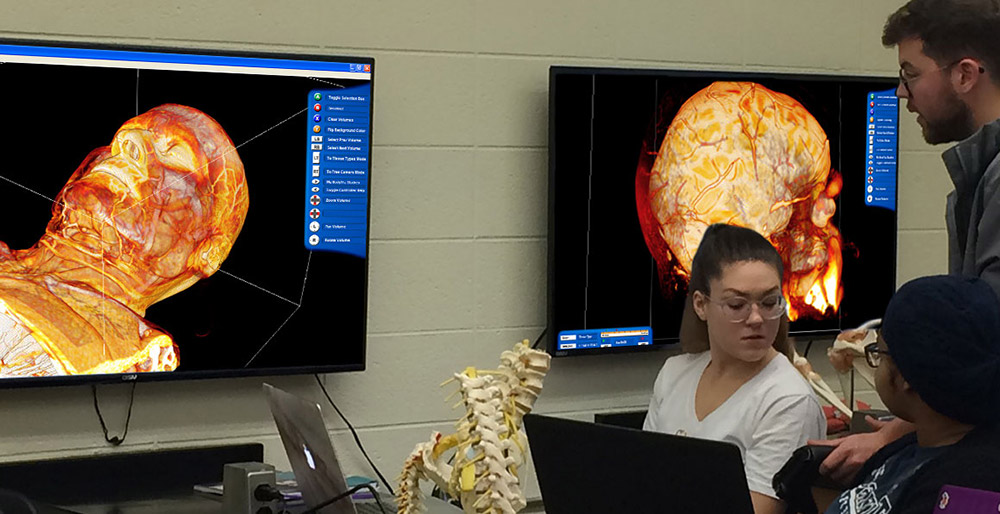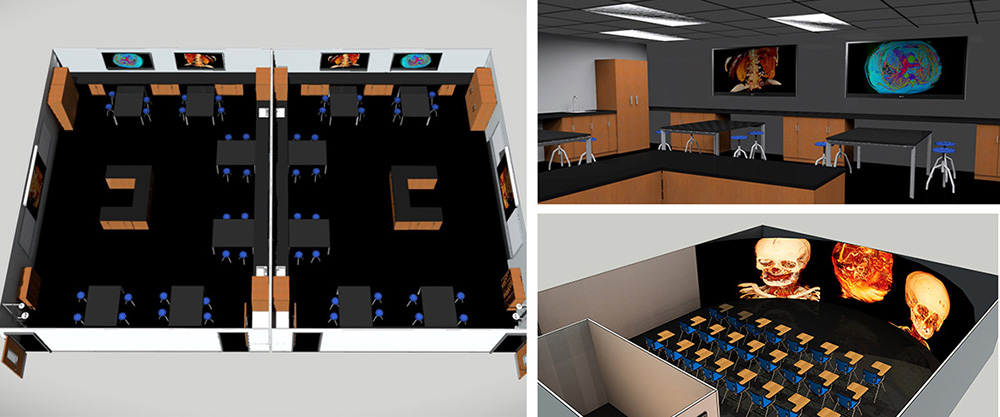University of Mississippi
December 2, 2019
Anatomy educators are constantly reviewing their course curricula and classroom resources to ensure they are providing an effective learning experience for their students. After all, most educators are in this field because they want to help their students succeed, both in and outside of the anatomy classroom.
After reviewing the curriculum at the University of Mississippi, Carol Britson, PhD, recently identified two aspects in their anatomy curriculum that were falling flat:
- Students are struggling to relate the flat, two-dimensional images with the study of the three-dimensional human body
- The absence of an upper-division human anatomy course for science majors applying to post-baccalaureate degree programs

Dr. Britson began researching 3D human anatomy software to assist in the creation of the new human anatomy course in order to fulfill the missing curriculum component and increase her students' comprehension of 3D anatomical relationships. She also wanted to transition her students’ study practices from those that focus on the memorization of course content to those that emphasize problem solving and identification skills. Like many educators at the collegiate level, Dr. Britson shifts from various classrooms and buildings for her lecture/lab sessions. Because of this, she knew her instructional resources would require superior functionality and portability, enabling her to augment courses with new anatomical resources in any environment she finds herself in.
Additionally, Ole Miss is planning a new STEM facility that will house the new anatomy lab. The BodyViz team worked with Dr. Britson every step of the way to build a solution that would not only help guide her in solving the two issues she identified in their existing curriculum, but also one that would easily integrate into the new facility. To ensure the new 3D virtual anatomy solution would easily integrate into the new facility, the BodyViz team visualized what her new virtual anatomy lab could look like once implemented. Although the facility and anatomy lab layout are subject to change, the 3D lab rendering helps Ole Miss faculty visualize different ways they will be able to integrate BodyViz into their new learning environment.

Ole Miss’ 3D anatomy solution is currently being utilized primarily during laboratory sessions, enabling students to:
- Collaborate and enhance learning in small groups
- Interact with thousands of 3D visualizations created from real human anatomy
- Virtually dissect and compare examples of pathology, variation, injury, disease, and more
Students in courses utilizing the 3D anatomy software are now realizing that the study of anatomical structures requires extensive problem-solving skills, as opposed to their previous practices of memorization, which has led to an increase in the comprehension and identification of 3D anatomical structures and relationships.
"Understanding how a structure or organ is comprised of different tissues and how those organs are structurally associated with each other helps a student reason their way to studying and identifying new features. BodyViz is one of the critical tools that I use to help guide my students to this realization."
Although Ole Miss hasn’t integrated the 3D anatomy software into their additional anatomy courses quite yet, Dr. Britson has plans of utilizing the same virtual anatomy solution, currently used in the new upper-division course, for their entry-level Human Anatomy and Physiology courses. Dr. Britson also has a vision of integrating the versatile anatomy software into their comparative histology course and, through faculty collaboration, within their comparative vertebrate anatomy courses. Due to the breadth of the MyBodyViz library, which includes hundreds of veterinary scans as well, integrating their anatomy solution into these courses will be almost effortless.
Beyond integrating their virtual anatomy solution with the additional courses, Dr. Britson plans on utilizing BodyViz alongside their existing laboratory resources. Instead of working in rotations with their existing anatomy resources (e.g. plastinated cadaver prosections, plastic models, and synthetic cadaver) as they've previously done, she envisions BodyViz to be utilized simultaneously with their existing resources within the laboratory. Outside of the lab, BodyViz resources will also be available to students in their lecture sessions and learning management system with the all new Anatomy Content Modules.
Although Ole Miss’ anatomy curriculum had a few kinks to work out, Dr. Britson and her team have done an excellent job breathing life back into the anatomy classroom with real virtual anatomy resources. Students are now comprehending 3D anatomical relationships in more efficient manner, improving their study habits, and working with real anatomical resources. Additionally, she has streamlined her anatomy curriculum with the addition of the upper-division human anatomy course, and now has a virtual anatomy solution that will expand with her as she continues to improve and grow the curriculum at Ole Miss.